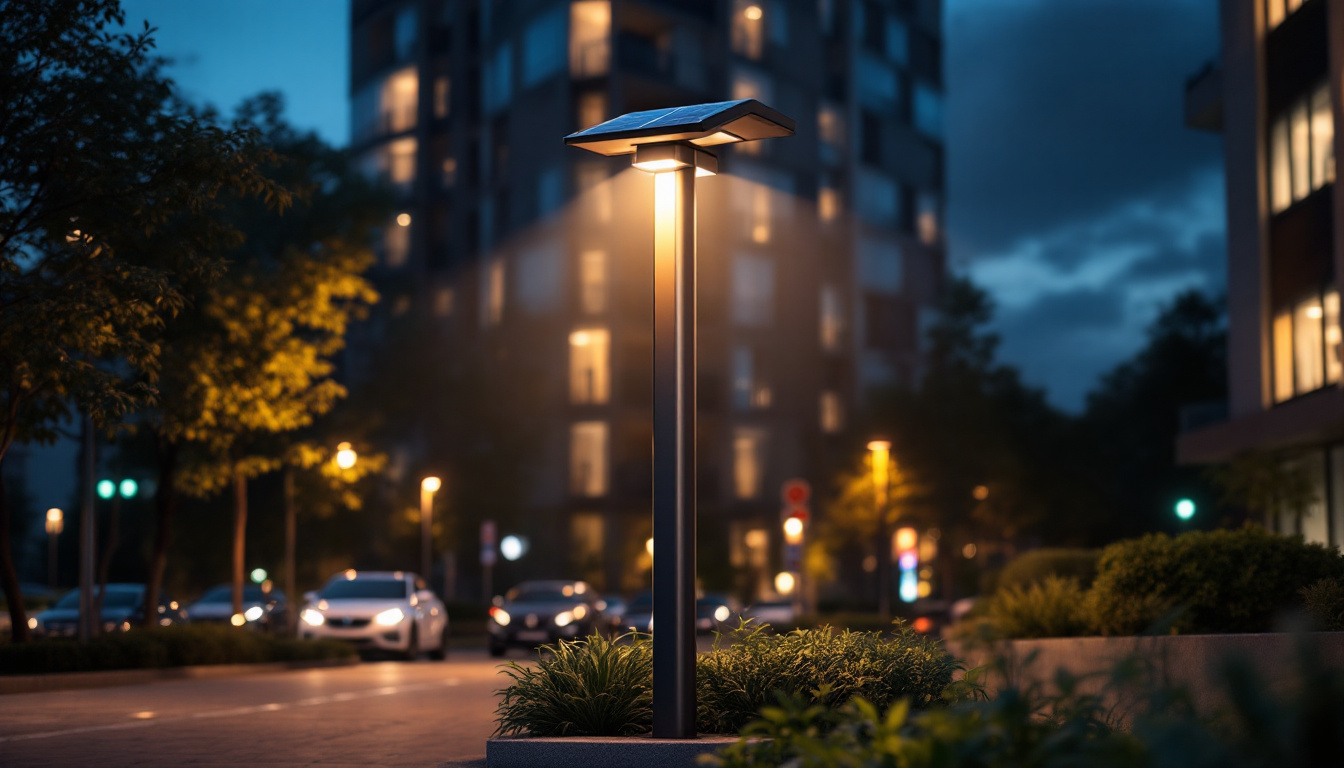
In the ever-evolving landscape of the lighting industry, High Intensity Discharge (HID) light bulbs have carved out a significant niche. These bulbs have transformed how spaces are illuminated, offering a blend of efficiency, brightness, and longevity. For lighting contractors, understanding the evolution of HID technology is crucial, not just for staying competitive but also for providing clients with the best possible solutions.
High Intensity Discharge lighting refers to a type of electric light that produces light by creating an arc between two electrodes within a gas-filled chamber. This process generates a high level of brightness, making HID bulbs ideal for various applications, from street lighting to sports arenas. The intense illumination provided by HID lights can significantly enhance visibility in large areas, contributing to safety and security in public spaces.
There are several types of HID bulbs, each designed for specific applications. The most common types include Metal Halide, High-Pressure Sodium, and Mercury Vapor bulbs. Each type has its unique characteristics, advantages, and disadvantages, which can influence the choice of lighting in different scenarios. Understanding these differences is crucial for selecting the right lighting solution for your needs.
Metal Halide bulbs are known for their excellent color rendering and are often used in retail spaces and sports facilities. Their ability to produce a bright, white light makes them ideal for environments where color accuracy is important, such as art galleries or photography studios. High-Pressure Sodium bulbs, on the other hand, are favored for their energy efficiency and long lifespan, making them a popular choice for street lighting. Their warm, yellowish glow is often associated with urban nightscapes. Mercury Vapor bulbs, while less common today, were once a staple in outdoor lighting but have largely been phased out due to efficiency concerns. Despite their decline, understanding their historical significance can provide insight into the evolution of lighting technology.
The operation of HID bulbs is fascinating. When electricity passes through the gas in the bulb, it ionizes the gas, creating a bright arc. This arc produces a significant amount of light, often exceeding that of traditional incandescent bulbs. The efficiency of HID bulbs is one of their most appealing features, as they can produce more lumens per watt than many other lighting technologies. This high efficiency not only translates to brighter light but also means lower energy costs over time, making them an attractive option for both commercial and residential applications.
However, it’s important to note that HID bulbs require a ballast to regulate the electrical current. This additional component can add complexity to the installation process, but it is essential for the proper functioning of the light bulb. The ballast not only starts the lamp but also maintains the correct voltage and current during operation, ensuring optimal performance. Additionally, advancements in ballast technology have led to more compact and efficient designs, further enhancing the appeal of HID lighting systems. As the industry evolves, newer options such as electronic ballasts are becoming increasingly popular, offering benefits like reduced flicker and improved energy savings.
The journey of HID lighting began with the quest for more efficient and brighter light sources. Traditional incandescent bulbs, while widely used, were limited in their efficiency and lifespan. The introduction of HID technology marked a significant turning point in the lighting industry.
The early innovations in HID lighting were driven by the need for better performance in outdoor and industrial settings. As cities grew and the need for effective street lighting increased, HID bulbs emerged as a viable solution. Their ability to produce a high lumen output while consuming less energy than incandescent bulbs made them an attractive option for municipalities.
Moreover, the development of different types of HID bulbs allowed for tailored solutions in various applications, further solidifying their place in the market. As technology advanced, so did the efficiency and effectiveness of HID lighting, paving the way for widespread adoption.
As the advantages of HID lighting became apparent, their adoption surged across different sectors. From commercial buildings to sports facilities, HID bulbs became the go-to choice for contractors seeking reliable and efficient lighting solutions. The bright, white light produced by Metal Halide bulbs, in particular, gained popularity in environments where color accuracy was crucial.
In addition to their performance benefits, HID bulbs also offered a longer lifespan compared to traditional lighting options. This longevity translated into lower maintenance costs, making them even more appealing to facility managers and contractors alike.
As the demand for energy-efficient lighting solutions increased, so did the innovation within the HID lighting sector. New technologies and materials have emerged, enhancing the performance and efficiency of HID bulbs.
The ballast is a critical component of HID lighting systems, and advancements in ballast technology have significantly improved the performance of these bulbs. Modern electronic ballasts provide better control over the electrical current, resulting in improved efficiency and reduced flickering. This technology also allows for quicker start times, enhancing the overall user experience.
Contractors can benefit from these advancements by offering clients more reliable lighting solutions that require less maintenance and provide consistent performance over time.
With growing concerns about energy consumption and environmental impact, HID lighting has also evolved to meet these challenges. Many modern HID bulbs are designed to be more energy-efficient, providing higher lumen outputs while consuming less power. This shift not only reduces operational costs for users but also contributes to sustainability efforts.
Furthermore, the development of low-mercury and mercury-free options has addressed environmental concerns associated with traditional HID bulbs. These innovations enable contractors to offer greener lighting solutions that align with the increasing demand for sustainable practices in the industry.
The versatility of HID lighting makes it suitable for a wide range of applications. Understanding where and how to use these bulbs effectively can help contractors deliver optimal solutions to their clients.
One of the most common applications for HID lighting is outdoor illumination. From streetlights to parking lots, HID bulbs provide the brightness and coverage needed to enhance safety and visibility. Their long-range illumination capabilities make them ideal for large outdoor spaces.
High-Pressure Sodium bulbs are particularly popular for street lighting due to their energy efficiency and long lifespan. They emit a warm yellow light, which, while not ideal for color rendering, is effective for illuminating roadways and pathways.
In industrial and commercial settings, HID lighting is often used to illuminate warehouses, factories, and retail spaces. Metal Halide bulbs are favored in these environments for their superior color rendering capabilities, which are essential for tasks requiring accurate color perception.
Additionally, the high lumen output of HID bulbs allows for fewer fixtures to be installed, reducing installation costs and improving energy efficiency. This makes HID lighting a practical choice for large commercial projects where budget and performance are critical considerations.
Sports arenas and entertainment venues rely heavily on HID lighting to provide the bright, even illumination required for events. Metal Halide bulbs are commonly used in these settings due to their excellent color rendering and ability to produce high-intensity light.
The ability to illuminate large areas without creating harsh shadows is crucial in sports settings, where visibility can impact performance and safety. Contractors working in this sector must be knowledgeable about the specific lighting requirements for different sports and events to ensure optimal outcomes.
As technology continues to advance, the future of HID lighting remains promising. While newer technologies such as LED lighting are gaining traction, HID bulbs still hold a significant place in the market due to their unique advantages.
The integration of smart technologies into lighting systems is becoming increasingly prevalent. HID lighting can be adapted to work with smart controls, allowing for enhanced energy management and automation. This capability enables contractors to offer clients innovative solutions that improve efficiency and reduce operational costs.
Smart lighting systems can adjust brightness levels based on occupancy or time of day, further optimizing energy use and enhancing user experience. As the demand for smart solutions grows, contractors should consider how HID lighting can fit into these advanced systems.
Despite the rise of LED technology, there remains a strong demand for high-performance lighting solutions in specific applications. HID bulbs continue to excel in environments where high lumen output and color accuracy are paramount. For contractors, this means that HID lighting will remain a viable option for many projects.
As clients seek efficient and effective lighting solutions, understanding the strengths and weaknesses of HID technology will be essential for contractors to provide informed recommendations.
High Intensity Discharge light bulbs have undergone significant evolution since their inception, shaping the landscape of the lighting industry. From their early innovations to modern advancements, HID bulbs have proven their worth in various applications, offering a blend of efficiency, brightness, and longevity.
For lighting contractors, staying informed about the latest developments in HID technology is vital for meeting client needs and remaining competitive in the market. As the industry continues to evolve, embracing both traditional and emerging lighting solutions will be key to delivering exceptional results.
Ready to take your lighting projects to the next level? At LumenWholesale, we provide lighting contractors with the highest quality HID light bulbs and other spec-grade lighting products at unbeatable wholesale prices. Say goodbye to local distributor markups and hello to a vast selection of premium lighting solutions that meet the strictest industry standards. With our commitment to affordability and convenience, you’ll enjoy free shipping on bulk orders, ensuring you get the best value without any hidden costs. Elevate your lighting game and discover wholesale lighting at the best value today with LumenWholesale.

Explore the revolutionary world of drop lights and discover how they’re transforming lighting design and installation.

Explore the essentials of dimmer switches for LED lighting in this comprehensive guide.

Discover how lamppost solar technology is revolutionizing the lighting industry with sustainable solutions.

Discover how a simple pendant light can transform your lighting projects by boosting efficiency and style.